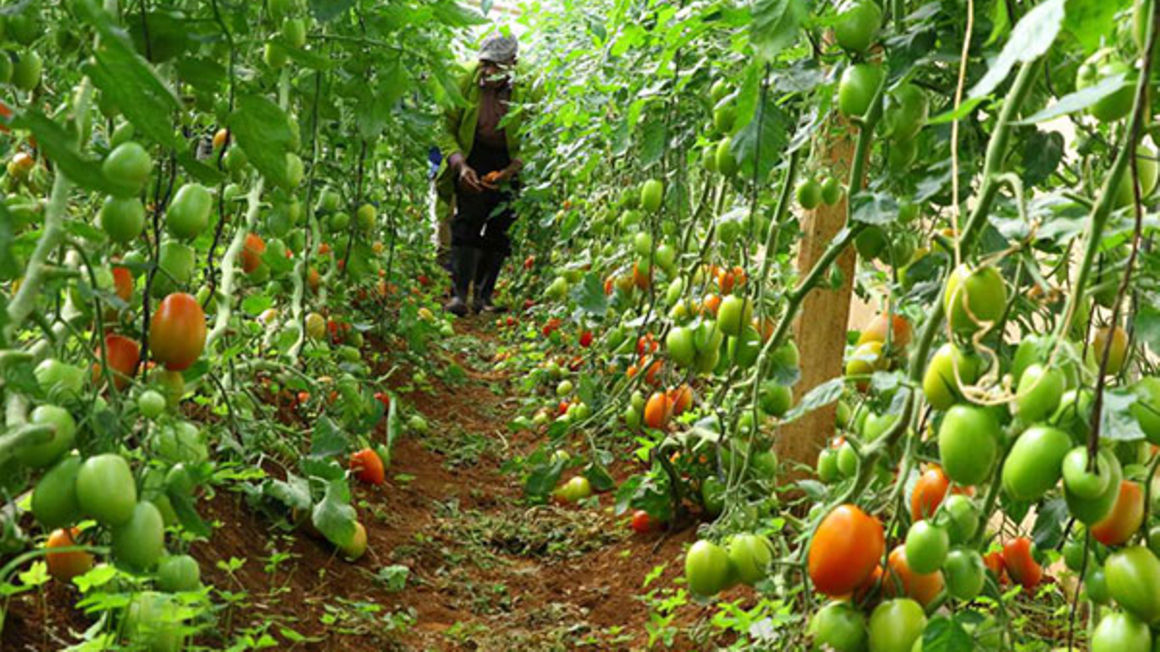A healthy crop of tomatoe. PHOTO FILE
Dar es Salaam. The National Bureau of Statistics (NBS) has revealed five key setbacks that limit agriculture productivity in Tanzania.
In a new report, the bureau named the issues being the limited access to extension services, slow implementation of irrigation systems, low use of fertilizers, improved seeds as well as underdeveloped mechanization.
Effective interventions from the government, policy makers and the private sector are highly encouraged to address the issues, as per the NBS’ National Sample Census of Agriculture 2019/20.
It was revealed that, during that agriculture year, only 5.2 percent (411,108 farmers) out of the sample of 7.8 million practised irrigation farming in Tanzania.
Although this is an increase compared to a decade ago, the development still signals slow implementation of irrigation and agriculture policies.
“With climate change, investment in irrigation infrastructure as it is stated in the pillar one of ASDP-II becomes critical and important if agriculture transformation has to happen,” reports read in part.
Farmers in Tanzania have also been behind when it comes to fertilizers application as only 2.8 million hectares, which is equivalent to 20.1 percent of total cultivated area, was applied with fertilizers.
The report suggests that the benefits of using productivity enhancing inputs such as improved seeds, pesticides and tractors are not fully exploited.
It was revealed that during the 2019/20 agricultural year, both local and improved seeds were used to produce a variety of crops. However the results showed that the majority, at 76.0 percent of the total cultivated area (13.8 million hectares) were planted with local seeds.
Only 20 percent with improved seeds, while 2.5 percent with both local and improved seeds
“This might be due to low availability/accessibility and perceived high prices of improved seeds due to limited knowledge of high productivity resulting from using improved seed among smallholder farmers,” NBS says.
Moreover, farmers in Tanzanian relied on draft animals such as oxen, bulls, cows and donkeys in agriculture activities more than used advanced mechanicals such as tractors.
It was reported that the draft animals make a greater contribution in cultivated area (71.6 percent) than tractors and power tillers during the 2019/20 agricultural year.
NBS also recommended that besides enhancing access to extension services, the government jointly with the private sector should increase quality of the services to ensure more adoption of improved practices for increased crop productivity.
Out of 7,677,291 crop growing households in Tanzania, 538,656 households (7.0 percent) received crop extension advice during the 2019/20 agricultural year.
Speaking during the report launch yesterday in Dodoma the agriculture minister Prof Adolf Mkenda acknowledged that productivity in the sector is still a major hurdle that limits farmers’ earnings and their contribution to the national economy.
He said the contribution of the crop sub-sector to the national’s Gross Domestic Product (GDP) is still low at 15.4 percent, while in total the agriculture sector contribution is also not satisfactory at 26.9 percent.
“That is why the government is keen on increasing investment in the agriculture sector, so that we can also support the lives of farmers,” he said.
Prof Mkenda said undeveloped farming practices, low implementation of technology and lack of better inputs still haunts the Tanzanian agriculture sector.
According to the 2020 Economic Survey Report Livestock contributed by 7.1 percent, Fisheries by 1.7 percent while Forest contributed 2.7 percent to the GDP.






No comments :
Post a Comment